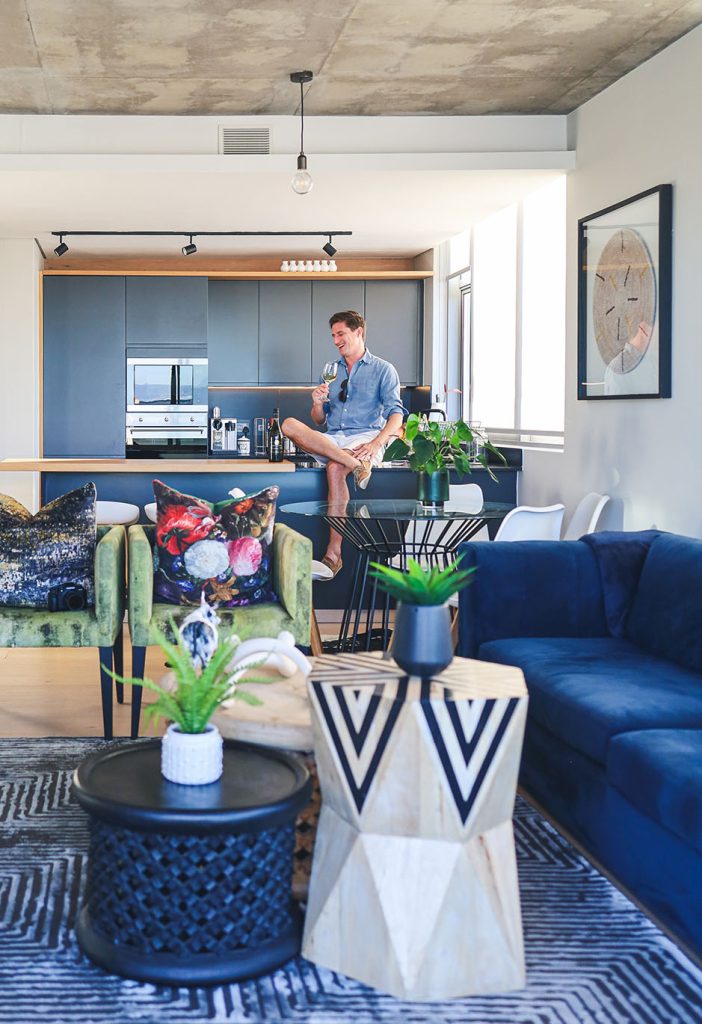In Cape Town’s competitive holiday rental market, the difference between a property that sits empty and one that commands premium rates often comes down to how it’s designed and marketed. Today’s discerning travellers don’t just book a location — they invest in an experience. For short-term rental owners wanting to maximise returns, understanding what captures attention and converts browsers into bookers is essential.
Interior design consultant Vanessa Marshall and travel journalist Jared Ruttenberg — both collaborators with Nox Cape Town — share how property owners can strategically position their spaces to stand out and attract guests willing to pay for quality.
Design as Your Competitive Advantage
Many Cape Town visitors are design-aware, shaped by exposure to international trends and local creativity. According to Vanessa, guests respond to interiors that mirror the city’s natural beauty — spaces that feel relaxed, sunlit, and connected to their surroundings.
She describes the preferred aesthetic as “refined simplicity” — natural materials, layered textures, and open spaces enriched with African craftsmanship, creating a look that’s both global and rooted in place.
Understanding your suburb’s design identity is key. In coastal areas like Clifton, Camps Bay, and Llandudno, guests gravitate towards a beach-luxe aesthetic: soft neutrals, organic linens, and furniture that blurs indoor-outdoor living. In the Winelands or City Bowl, properties may lean towards classic African or Victorian influences, depending on their architecture and cultural context.
But what truly drives bookings is originality. Jared notes, “Uniqueness always wins. Even if it’s not everyone’s taste, people can see it’s not a cookie-cutter design.” Distinctiveness not only captures attention — it also justifies premium nightly rates.

Creating Spaces That Convert
High-end rentals are no longer judged by location or amenities alone. Their mood, aesthetic, and atmosphere play an equal role.
Vanessa’s design philosophy begins with emotion: “A truly memorable space should make you feel something the moment you walk in — calm, inspired, cocooned.”
For property owners, that means layering natural textures, tactile finishes, curated local art, and intentional lighting to create harmony between design and energy. Every detail should quietly elevate the guest experience — and photograph beautifully for your listings.
Why All-White Rentals No Longer Sell
If you’re relying on a “safe” all-white interior, it’s time to evolve. “The era of the all-white rental is over,” says Vanessa. “Travellers want authenticity and a sense of place.”
She recommends soft coastal hues or earthy, sun-baked tones paired with rattan, sisal, and timber to create an immersive, grounded feel. Design should tell a story — one that feels unmistakably Cape Town.

Critical Mistakes That Cost You Bookings
Vanessa warns against over-theming. A few considered African references are sophisticated; too many safari prints or beach motifs can feel contrived and cheap in photos.
Comfort should never be sacrificed for aesthetics — guests return to homes that work. Lighting is equally vital: ambient, task, and accent layers enhance both guest experience and marketing visuals. Finally, avoid low-quality finishes. High-end materials pay for themselves through better reviews and higher rates.
Marketing Through the Human Element
When it comes to helping guests see themselves in your space, Jared’s advice is simple: people connect with people. “When they see others naturally engaging in the space, they can picture themselves there. The more natural, the better.”
Authentic, lifestyle-focused images outperform sterile property shots. Showcase real moments — someone sipping coffee on the terrace, reading by the pool, or preparing local produce in the kitchen.
Jared also highlights the power of thoughtful, shareable details: an outdoor shower tucked into a lush garden, stylish portable lamps for al fresco dinners, or bath salts in beautiful glass jars. Layer in human touches such as bespoke welcome cocktails, fresh-baked bread, or a complimentary wine-tasting voucher. These gestures not only justify premium rates but also inspire the kind of guest-generated content that markets your property for you.
Sensory Staging That Photographs Beautifully
Vanessa describes sensory staging as the art of evoking emotion through all five senses — the scent of sea salt and fynbos, the feel of linen and cane, the sound of ambient music or waves beyond open doors.
When photographing your space, capture movement and atmosphere: curtains drifting in the breeze, sunlight tracing textures, or the warm glow of dusk over natural stone. These visual cues help viewers imagine themselves there — and that’s what turns browsers into bookers.

The Bottom Line
Maximising your short-term rental investment in Cape Town requires more than a prime address. It takes strategic design, authentic storytelling, and emotionally resonant marketing.
By prioritising uniqueness, comfort, and a sense of place, property owners can command premium rates, secure higher occupancy, and build a brand that stands out in an increasingly crowded market.



